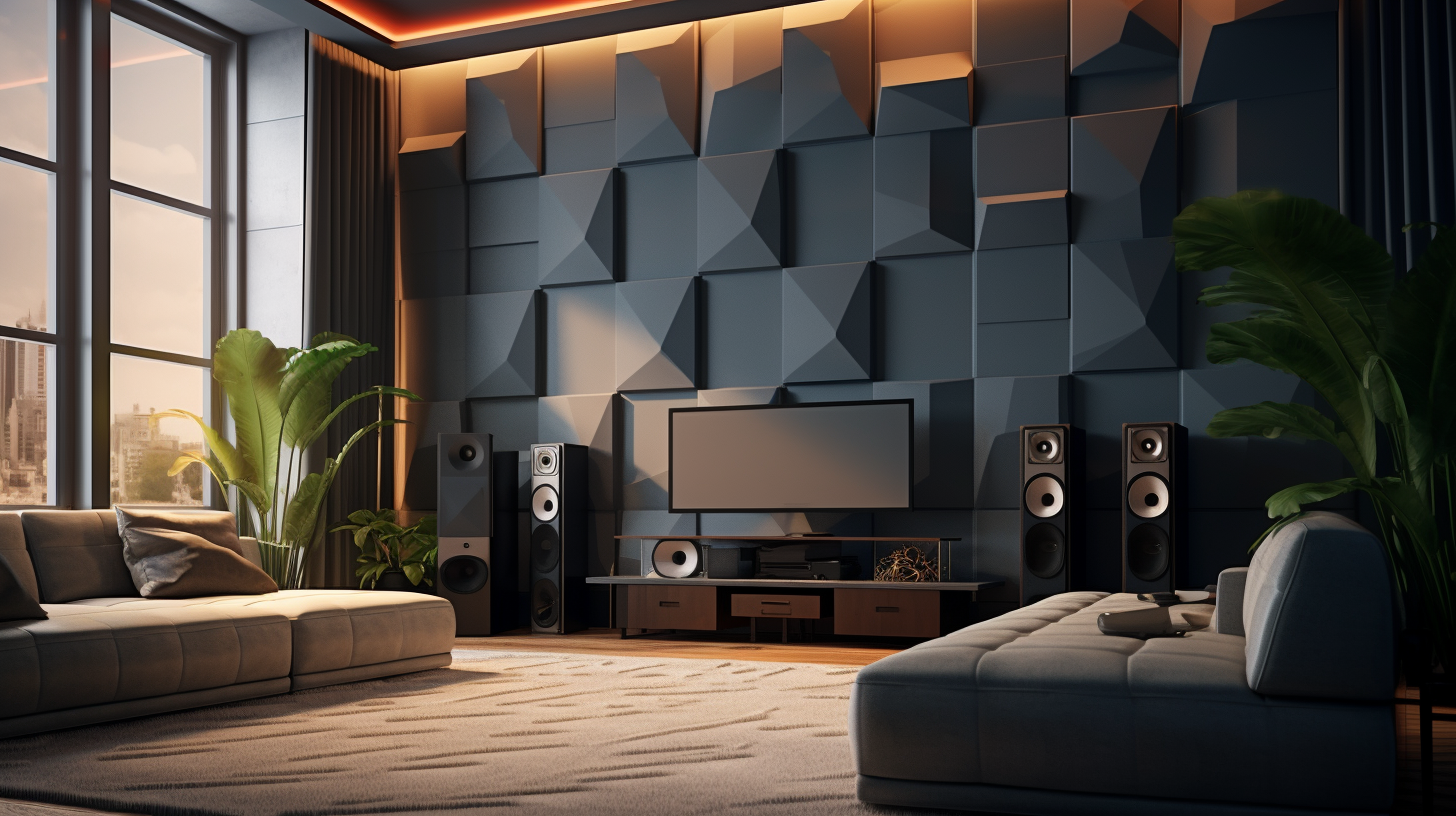Imagine setting up your dream home theater, complete with top-notch acoustic panels for the ultimate sound experience.
But have you paused to consider what those panels are made of and how safe they are for you and your family?
Acoustic panels are becoming increasingly popular in both residential and commercial settings.
While they offer superior sound quality, it’s crucial to understand their safety aspects, ranging from fire resistance to chemical emissions and more.
So, let’s dive in to arm you with the essential knowledge you need, including a spotlight on polyester acoustic panels as a safe and sustainable choice.
Are Acoustic Panels Fire Retardant?
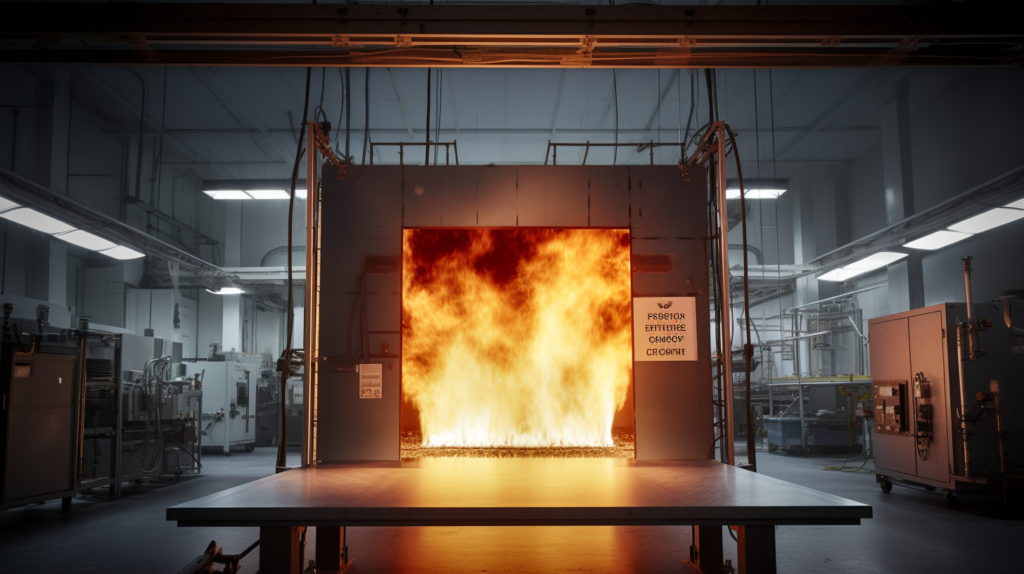
One of the most critical safety aspects that users focus on when considering acoustic panels is their fire resistance.
The term “fire retardant” often comes up in conversations and product descriptions, but what does it actually mean?
Simply put, fire retardant means that the material is designed to resist ignition and impede the spread of fire.
However, it’s crucial to clarify that fire retardant does not mean fireproof.
Even materials treated to be fire retardant will burn under certain conditions, albeit at a much slower rate than non-treated materials.
Different materials used in the construction of acoustic panels have distinct flammability profiles.
For example, foam panels are generally more susceptible to catching fire compared to mineral wool or polyester panels.
Some acoustic panels undergo specific treatments to enhance their fire-resistant qualities, which is often a requirement in commercial settings where building codes are stringent.
Certifications like ASTM E84 in the U.S. or the Euroclass system in Europe provide a standardized way of measuring a material’s reaction to fire.
These certifications involve various tests that assess how quickly fire spreads across a material and how much smoke is developed in the process.
Always look for these certifications when you’re shopping for acoustic panels.
They offer a benchmark for comparing different products and ensuring that you’re meeting the fire safety requirements set by your jurisdiction.
In addition to the panels themselves, consider the other materials and objects in the vicinity. Electrical fixtures, drapes, and even furniture can contribute to fire risk.
Therefore, even if your acoustic panels are certified fire retardant, it’s advisable to have other fire safety measures in place.
These could include fire alarms, extinguishers, and an evacuation plan, ensuring a multi-faceted approach to fire safety.
Do Acoustic Panels Release Harmful Chemicals or Volatile Organic Compounds (VOCs)?
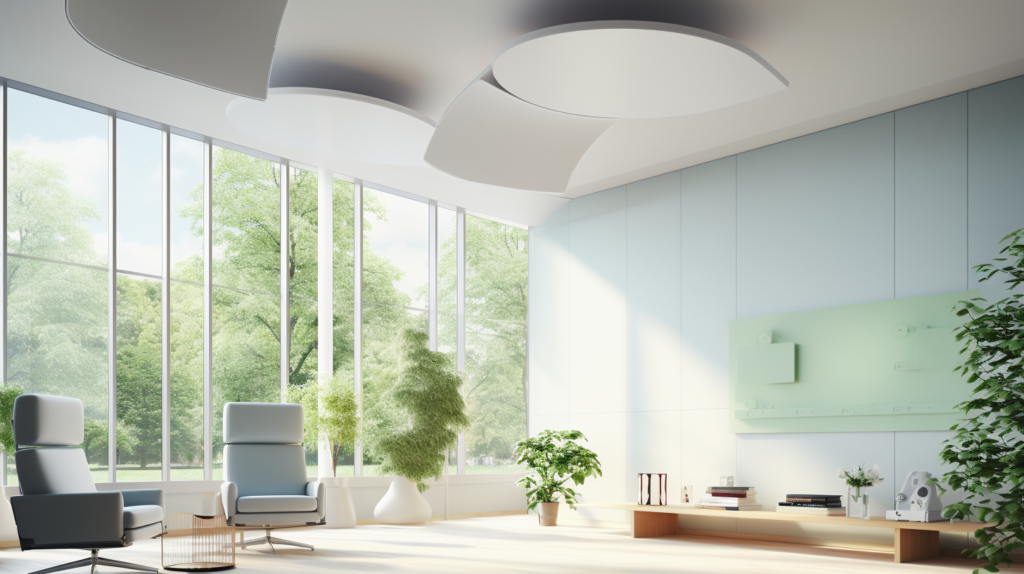
Another crucial factor affecting the safety of acoustic panels is the potential release of harmful chemicals or volatile organic compounds (VOCs).
These compounds can be emitted from various types of acoustic panels, particularly those made from synthetic materials like certain types of foam.
The issue here is not just about immediate toxicity but also about long-term exposure, which could lead to a range of health issues.
VOCs are organic chemicals that evaporate into the air at room temperature.
They can come from a wide range of sources, including cleaning supplies, paints, and building materials like acoustic panels.
Once released into the air, VOCs can contribute to indoor air pollution, posing various health risks ranging from eye and throat irritation to more severe conditions like liver damage or even cancer in extreme cases of prolonged exposure.
That’s why it’s essential to know the VOC emissions level of the acoustic panels you’re considering.
Many reputable manufacturers provide this information upfront, and some products are specially designed to have low VOC emissions.
Certifications like GREENGUARD or the Indoor Advantage Gold standard are good indicators that a product meets stringent VOC emissions requirements.
To minimize risk, always ensure proper ventilation during and after the installation of acoustic panels.
This is particularly crucial if you’re installing them in an area with limited air exchange, like a basement or an internal room without windows.
Adequate ventilation can help disperse VOCs more quickly, reducing their concentration in the indoor air.
Certainly, let’s continue expanding on the remaining sections to make the article more comprehensive.
Can Acoustic Panel Fibers Affect Respiratory Health?
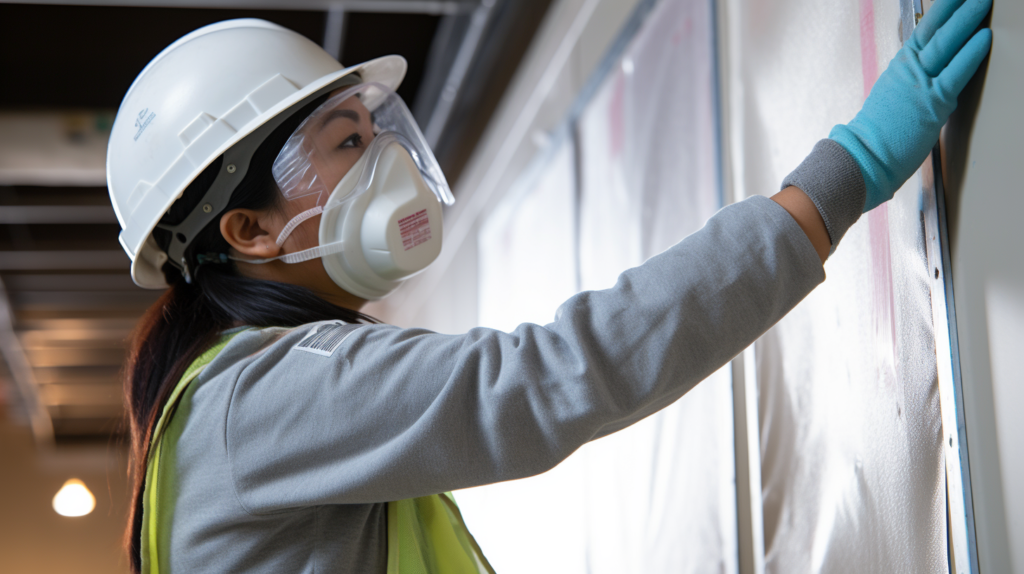
When it comes to the safety of acoustic panels, not all materials are created equally. Some types, such as fabric-wrapped panels, pose a unique set of challenges.
The fibers from these panels can become airborne during installation or when they deteriorate, which can be a significant concern for respiratory health.
Breathing in these fibers can lead to irritation in the short term and could potentially cause long-term respiratory issues.
If you’re installing fabric-wrapped acoustic panels, taking precautions to protect your respiratory system is crucial.
Wearing specialized respiratory protection, such as 3M N95 masks, can provide a significant level of safety.
These masks are designed to filter out a majority of airborne particles, including the types of fibers that can be released from acoustic panels.
Beyond personal protective equipment, the setting in which you install these panels can also impact respiratory safety.
A well-ventilated area can help to disperse airborne particles more effectively, reducing the concentration of fibers in the air.
If the installation area is not well-ventilated, consider using fans or other methods to improve air circulation during and after the installation process.
It’s also advisable to avoid disturbing the panels unnecessarily once they are installed.
Unneeded interference can release more fibers into the air, posing an ongoing risk.
Regular inspection for signs of deterioration can help you determine when it’s time to replace the panels, reducing the risk of fiber release as the panels age.
Are Acoustic Panels Safe in the Long Run?
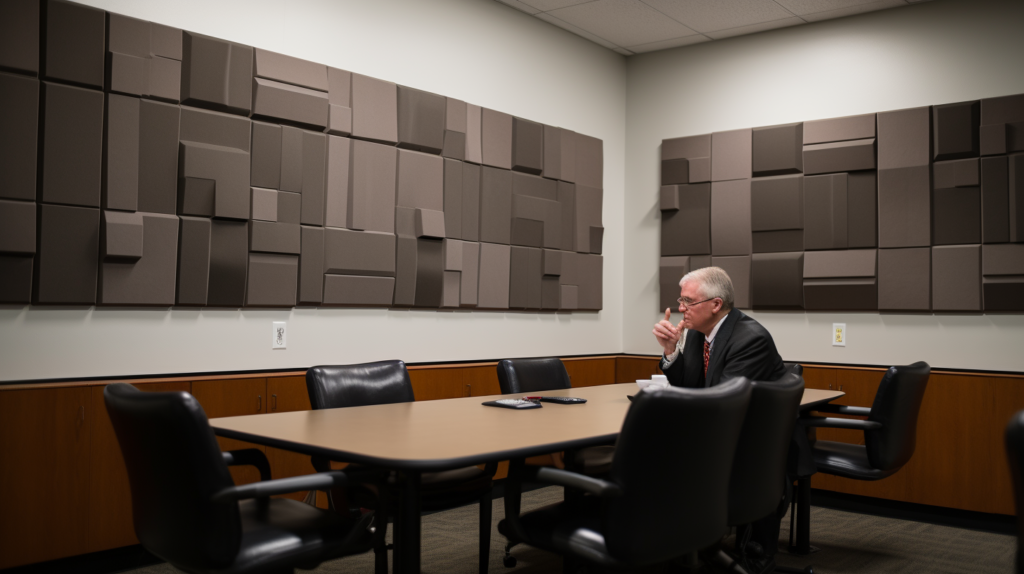
When considering the long-term safety of acoustic panels, a few factors come into play. First, there’s the question of durability.
Acoustic panels, like any other product, are subject to wear and tear over time. This natural deterioration can lead to a reduction in the panel’s effectiveness but also may affect its safety features.
For example, the fire-retardant properties of some panels can degrade over time, making them less effective in slowing the spread of fire.
Secondly, environmental factors can also play a role in the longevity and safety of acoustic panels.
Excessive moisture can lead to mold and mildew, which not only degrade the panel but also pose health risks.
Extreme temperatures, too, can affect the material’s integrity, potentially making it more susceptible to deterioration and therefore less safe over time.
Regular maintenance and inspection can help ensure that your acoustic panels remain safe for the long term.
Periodic checks can help you spot any signs of wear, discoloration, or other forms of degradation that may indicate it’s time for a replacement.
Additionally, make sure to consult the manufacturer’s guidelines for cleaning and maintenance, as improper care can also affect the panels’ safety features.
Polyester Acoustic Panels: A Safe and Sustainable Choice
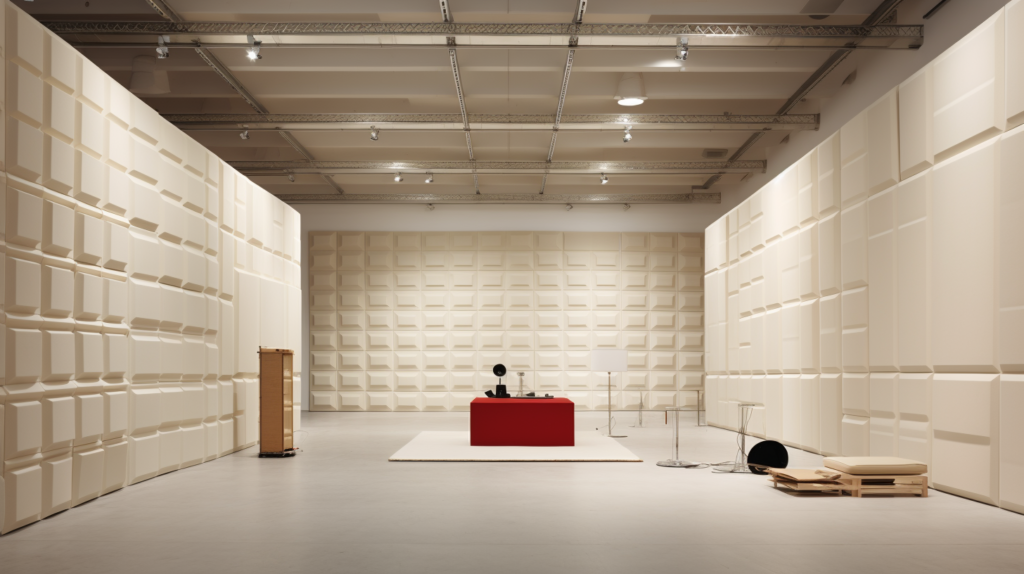
Among the variety of materials available for acoustic panels, polyester stands out for several reasons.
From a safety perspective, polyester acoustic panels offer several advantages.
They are generally fire-resistant, meaning they are less likely to catch fire compared to other materials like foam.
They also emit fewer volatile organic compounds, making them a healthier choice for indoor environments.
In addition to their safety features, polyester acoustic panels are also environmentally friendly.
The manufacturing process for these panels often involves recycled materials, reducing their carbon footprint.
This makes them a particularly attractive option for those who are conscious of both safety and sustainability.
But it’s not just about the material itself; the construction of polyester acoustic panels also contributes to their safety.
These panels are often designed to be more durable and resistant to common forms of wear and tear.
This added durability means they are likely to maintain their safety features for a longer period, making them a wise investment for long-term projects.
Conclusion
Navigating the safety of acoustic panels involves multiple factors, from fire resistance to chemical emissions and material choices like polyester.
While these panels are generally safe, due diligence is essential. Always look for certifications, consider long-term durability, and follow proper installation guidelines.
By taking a comprehensive approach, you can ensure a safer and more harmonious environment for all occupants.
